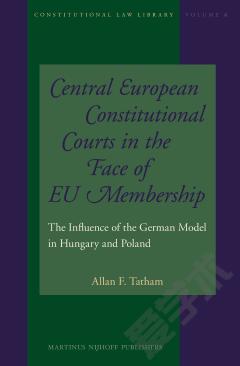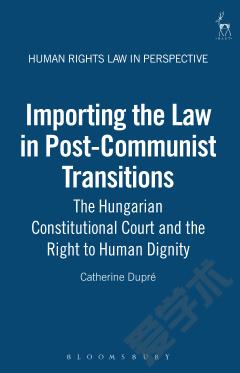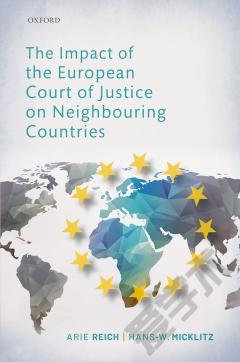Central European Constitutional Courts in the Face of EU Membership —— The Influence of the German Model in Hungary and Poland
----- 中央在面对欧盟成员国的欧洲宪法法院:在匈牙利和波兰的德国模式的影响
Acknowledgments Permissions Table of Cases Cited Table of Legislation Construed Abbreviations Introduction: A. Objectives of Research B. Methodology of the Research C. Structure of the Research Chapter One: The General EU Constitutional Context Background A. Judicial Construction of the EU Constitution B. Framework for Constitutional Court Reticence vis-a-vis European Integration C. Transjudicial Communication in the EU D. Conclusion Chapter Two:The Predominance of The German Model in Central Europe: Migrations of Legal and Constitutional Ideas Background A. Relevant Legal Models for Central Europe B. Relevancy of the German Model in Central Europe C. Conclusion Chapter Three:The German Federal Constitutional Court and European Law: A Case of "Thus Far, and No Further"? Background A. Constitutional Review B. Essential Core of Sovereignty C. Transfers of Sovereignty and European Integration D. National Constitutional Court Acceptance E. Limits to National Constitutional Court Acceptance F. Concluding Observations Chapter Four:The Hungarian Constitutional Court and European Law: A Case Of "Slow And Steady Wins The Race"? Background A. Constitutional Review B. Essential Core of Sovereignty C. Transfers of Sovereignty and European Integration D. National Constitutional Court Acceptance E. Limits to National Constitutional Court Acceptance F. Concluding Observations Chapter Five: The Polish Constitutional Tribunal and European Law: A Case of "Sovereignty Regained"? Background A. Constitutional Review B. Essential Core of Sovereignty C. Transfers of Sovereignty and European Integration D. National Constitutional Court Acceptance E. Limits to National Court Acceptance F. Concluding Observations Chapter Six: Conclusion A. Overall Context of the Conclusion B. The Issue of Constitutional Pluralism for Constitutional Courts: The Current Situation Explained? C. A Controversial Proposal D. Final Remarks Bibliography Index.
{{comment.content}}








 京公网安备 11010802027623号
京公网安备 11010802027623号